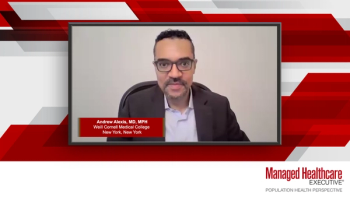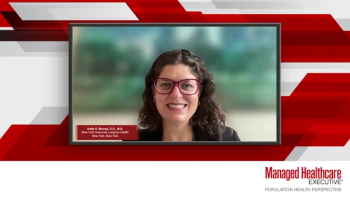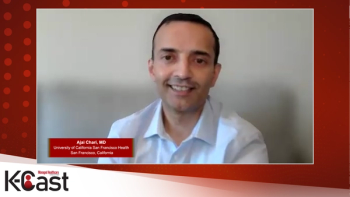
Expert Interviews


Jennie Barlow, Pharm.D., MBA, associate vice president, pharmacy industry relations for Scripius, discusses cost savings from removing Jardiance (empagliflozin) as a preferred SGLT2 inhibitor and repalcing it with Brenzavvy (bexagliflozin).

Joe Boyle shared proactive compliance strategies for PBMs at PBMI 2025, highlighting the need to adapt to evolving regulations for sustainable growth.

PBMs navigate increasing regulatory demands for transparency, as Joe Boyle stressed the need for robust data management and strategic compliance at PBMI 2025.

At the PBMI 2025 Conference, ClearFile president Joe Boyle encouraged PBMs to attend NAIC meetings, stressing that showing up and maintaining relationships with regulators is critical for long-term success.

Vertically integrated health plans are starting to fall by the wayside due to their limited flexibility, while modular health plans are gaining traction, according to Scott Rossignol, senior director of Drug Value Strategy at Abarca Health.

Employers face rising healthcare costs and specialty drug challenges, prompting a shift towards strategic partnerships with PBMs for better solutions, according to Karen van Caulil, Ph.D., president and CEO of the Florida Alliance for Healthcare Value, who chatted with MHE in the final installment of a two-part video interview.

Act 624 and ambiguous ERISA policies are some of the biggest issues faced by pharmacy benefit leaders today, according to Robyn Crosson, vice president of government relations, Navitus Health Solutions.

Employers are demanding more transparency and partnership from pharmacy benefit managers (PBMs), according to Karen van Caulil, Ph.D., president and CEO of the Florida Alliance for Healthcare Value, who spoke with MHE ahead of her remarks at the Pharmacy Benefit Management Institute’s annual meeting in Orlando.

Pharmacy and medical benefit programs have traditionally operated separately, despite having similarities. Nishi Goel, Pharm.D., vice president of customer experience, Agadia, is trying to change that.

The growing trend of at-home drug administration emphasizes the need for integrated medical and pharmacy reviews, according to Nishi Goel, Pharm.D., vice president of customer experience, Agadia.

An expert discusses how data from the pivotal phase 3 trials of topical ruxolitinib showed 30% of patients achieved 75% improvement in facial vitiligo at 24 weeks, with real-world experience confirming these results and demonstrating that longer treatment periods and combination with phototherapy can further enhance repigmentation outcomes

An expert discusses how clinicians now face the exciting challenge of selecting optimal treatments from multiple new options for BCG-unresponsive patients, opening opportunities for clinical research to determine the best sequencing and patient-specific approaches.

An expert highlights that overcoming clinical inertia in US community settings through targeted education and patient advocacy is essential to increase frontline use of CD38 antibodies in transplant-ineligible multiple myeloma, ensuring more patients benefit from proven, life-extending therapies.

Kasey Raetz, Pharm.D., vice president at Express Scripts and a winner of the PBMI Innovator Award, told MHE she takes pride in the role pharmacy benefit managers play in helping patients access needed care while supporting health plans in managing a complex system.

An expert discusses how JAK inhibitors represent targeted therapy that specifically blocks the interferon gamma–driven JAK-STAT pathway responsible for autoimmune melanocyte destruction in vitiligo, offering greater efficacy and safety compared with broad immunosuppressive treatments such as corticosteroids.

An expert discusses how gene therapy represents a breakthrough treatment approach for BCG-unresponsive patients, offering quarterly dosing that reduces treatment burden while showing promising response rates of 50% to 70% in real-world evidence.

An expert discusses how patients with BCG-unresponsive non-muscle invasive bladder cancer (NMIBC) now have several FDA-approved treatment options beyond radical cystectomy, including pembrolizumab, gene therapy and intravesical chemotherapy combinations.

In this second part of a three-part of a video series, Kasey Raetz, Pharm.D., a PBMI Innovator, told MHE about leading the development of EncircleRx, a program that balances patient access, holistic weight loss support and financial protection for health plans amid soaring demand for GLP-1 drugs.

In this final video of a three-part video series, Joshua Fredell, Pharm.D., senior vice president at CVS Caremark and a winner of Managed Healthcare Executive’s PBMI Innovator Award, said most health plans prioritize achieving the lowest net drug costs, whether through rebates, lower list prices or biosimilars.

The next step for the Rise For Health study researchers is to study the health benefits of frequent standing in older men and women.

An expert discusses how home administration of oncology drugs in the US faces significant logistical and reimbursement challenges—despite the safety of subcutaneous and on-body delivery systems. He highlights that regulatory barriers, practice economics, and evolving payer policies limit adoption, even as patient-reported outcomes increasingly support the value of well-tolerated, effective regimens such as those studied in MAIA.

New study results provide insight into improving heart health through behavior changes, such as taking standing breaks throughout the day.

A lack of training and vague, overlapping symptoms can be attributed to more than three-quarters of autoimmune patients being misdiagnosed at least once, according to Veena Joy, the U.S. Lead for Strategic Partnerships, Allergy and Autoimmunity at Thermo Fisher Scientific.

An expert discusses how phototherapy requires 2 to 3 sessions per week in specialized light booths or home units, is particularly useful for vitiligo covering more than 10% body surface area, and can be targeted to specific areas using 308-nm lasers for smaller lesions.

In this second video of a three-part series, Joshua Fredell, Pharm.D., senior vice president at CVS Caremark, said innovation in PBMs comes from simplifying pricing, offering flexible benefit designs, and using technology to create a smoother experience for members.

An expert discusses how non-muscle invasive bladder cancer (NMIBC) creates a significant clinical and financial burden with up to 60% recurrence rates, affecting an estimated 85,000 new patients annually and requiring frequent office visits that impact quality of life for this older population.

An expert discusses how non-muscle invasive bladder cancer (NMIBC) is a localized form of urothelial cell carcinoma that primarily affects older men with smoking as the primary risk factor, requiring close follow-up due to its highly recurrent nature.

This final part of the three-part video series highlights Sharon Faust of Navitus reflecting on how personal challenges, including her husband’s accident, reshaped her perspective and empowered her to lead boldly in the PBM industry.

Children with HIV face a shortened life span, educational barriers and daily stigma, according to Amir Ardeshir, Ph.D., DVM, associate professor of microbiology and immunology at Tulane University.
